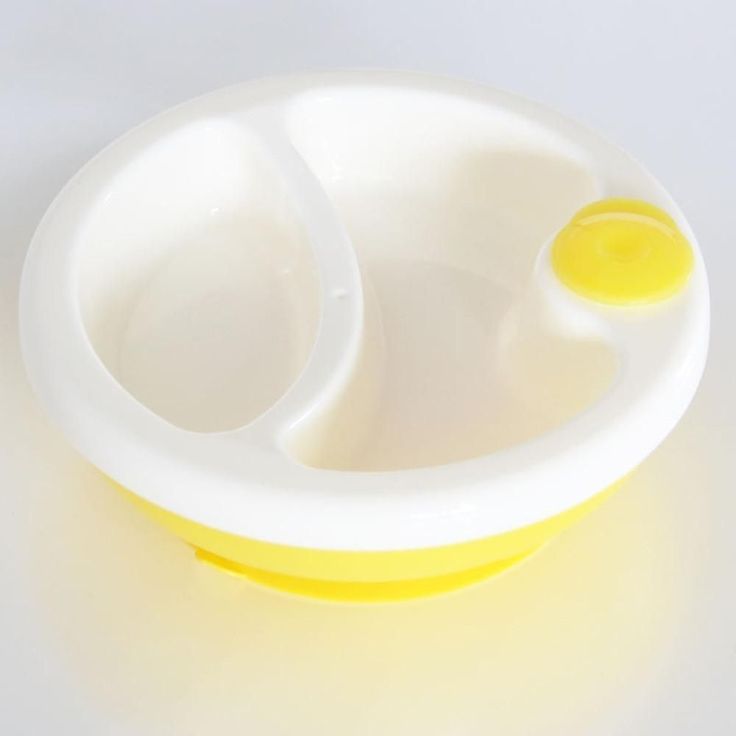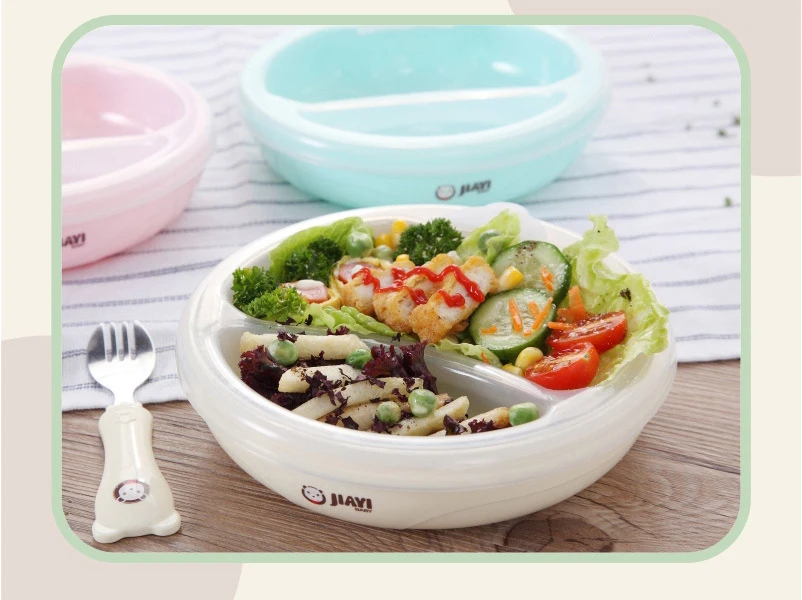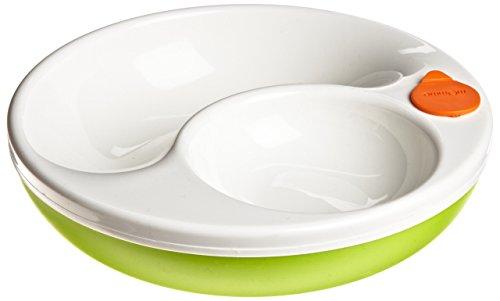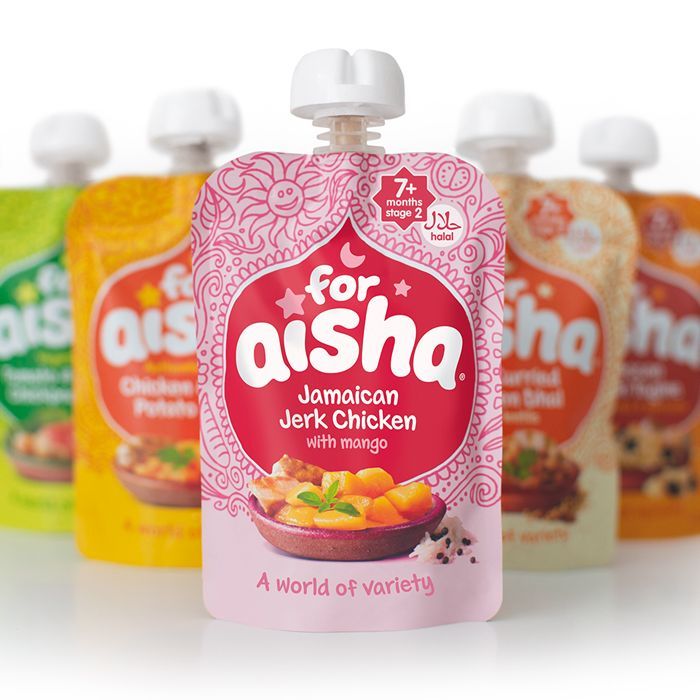Baby food warming dishes
Best Travel Baby Food Warmers
If your baby is new to solid foods, it’s likely your baby is used to having warm food. But what about when you travel? If having the ability to provide warm food for your baby while traveling, a good option is a portable baby food warmer.
Managing baby food while traveling can be a little more challenging, since you need a place to stop and feed your baby. Rather than returning to your hotel room or vacation rental, a baby food warmer for traveling can make feeding your baby on-the-go even easier, especially for those babies who can be a little finnicky about food temperature.
The best part is that many of these travel baby food warmers work are also travel bottle warmers as well! So you don’t even need to buy a separate baby travel product!
Here’s our list of the best baby bottle and food warmers recommendations to make buying yours a piece of cake.
Best Portable Baby Food Warmers
- Types of Portable Baby Food Warmers
- Using Hot Water to Warm Baby Food
- Electric Portable Baby Food Warmer
- What to Look for in a Portable Baby Food Warmer
- 1.
Size for Travel
- 2. Cleaning
- 3. Compatibility for Baby Food Jars or Pouches
- 4. Length of Warming Time
- 5. Temperature Retention Rate
- 6. Power Outlet
- 1.
- Best Travel Baby Food Warmers
- 1. Tommee Tippee Closer to Nature Portable Travel Baby Food Warmer
- 2. BEABA Fast Baby Food Warmer
- 3. Kiinde Kozii Voyager, Compact Travel Food Warmer
- 4. Papablic Mini Portable Travel Baby Food Warmer
- 5. bblüv - Platö - Warming Feeding Plate
- 6. DaCool Insulated Food Jar
- 7. Chicco Two-in-One Bottle & Baby Food Warmer
- More Baby Travel Gear
- Pin It For Later!
This post contains compensated links.
Types of Portable Baby Food Warmers
Using Hot Water to Warm Baby FoodIf you don’t like to bother with cables and electricity, using hot water to heat your baby travel food warmer is considered the simplest way. Many parents prefer this type since it allows them to prepare their baby’s food or bottle ahead of time.
Many parents prefer this type since it allows them to prepare their baby’s food or bottle ahead of time.
Although getting the perfect temperature each time can be a bit of a hassle, water baths guarantee that food is heated uniformly, preserving its natural characteristics.
All you need to do is fill your portable food warmer with warm water and place your baby’s food in it for under 15 minutes. Always ensure that the container is sealed properly to avoid leakage.
Electric Portable Baby Food WarmerElectric or battery-operated baby food warmers are convenient when facilities for a hot water bath are unavailable. These portable travel baby food warmers are compact and favored by parents who value efficiency and function.
While some may be a bit large to travel with, they are great when you have extra space lik eon your next road trip with a baby.
What to Look for in a Portable Baby Food Warmer
1. Size for Travel
Look for a baby food warmer for travel that’s compact enough to fit your travel style. If you pack as lightly as possible, you’ll want one that is compact enough to fit in your backpack diaper bag.
If you pack as lightly as possible, you’ll want one that is compact enough to fit in your backpack diaper bag.
2. Cleaning
When it comes to babies, hygiene is of utmost concern. Finding hygienic and hassle-free food warmers that are built of washable/wipeable and leakproof components is a must for busy parents. All the warmers mentioned on this list are easy to care for and most are even dishwasher-friendly!
3. Compatibility for Baby Food Jars or Pouches
We prefer items that have multiple uses, like a baby bottle warmer that can also be used as a baby food warmer for travel.
Find a versatile warmer that is ideal for warming baby bottles and for baby food jars and pouches. Most of the warmers on this list even come with their own containers, preventing extra utensils and bowls from piling up.
4. Length of Warming Time
Time is of the essence when you are on-the-go. No matter how well-planned your trip, traveling with a child will always have its hiccups. Save yourself the trouble by choosing the right bottle and food warmer for you and your little one.
Save yourself the trouble by choosing the right bottle and food warmer for you and your little one.
All the bottle and food warmers on this list are efficient and user-friendly, with the majority of them taking between 10-15 minutes to heat. Some even take as little as five minutes!
5. Temperature Retention Rate
You can even avoid reheating your baby’s food again by keeping it warm in a travel baby food warmer.
6. Power Outlet
The best travel baby food warmers can be juiced up with a compatible power bank or automobile USB cord. A baby food warmer that is compatible with a wide range of outlets makes heating your baby’s food as simple as recharging your phone. You’ll never have to worry about frantically searching for a source again.
Note: Remember to dispose of the warmer at the first sign of damage or leak and always inspect the warmer before each use.
Best Travel Baby Food Warmers
More Baby Travel Gear
Pin It For Later!
Safe Food for Babies and Children - Heating Solid Food Safely
Title
(FN715, Reviewed Dec. 2021)
2021)
File
Publication File:
FN715Summary
Whether warming bottles or solid foods, it is ALWAYS important to use safe heating practices to keep your baby happy and healthy.
Lead Author
Lead Author:
Julie Garden-Robinson, Ph.D., R.D., L.R.D. Food and Nutrition Specialist
Other Authors
Tami Totland, R.D., L.R.D., Program Assistant (former)
Availability
Availability:
Web only
Publication Sections
Did you know?
Babies grow quickly during the first year of life, usually doubling in weight by 4 to 6 months of age and tripling in weight by 1 year. Visits to the doctor’s office for checkups are important during this time of rapid growth to ensure your baby is receiving good nutrition. The types of textures and foods infants are able to eat during the first year change dramatically. Solid foods usually are introduced to infants at approximately 4 to 6 months of age.* As with infant bottles, it is important to heat solid foods carefully to avoid burns to the baby’s mouth and throat.
Solid foods usually are introduced to infants at approximately 4 to 6 months of age.* As with infant bottles, it is important to heat solid foods carefully to avoid burns to the baby’s mouth and throat.
Whether warming bottles or solid foods, it is ALWAYS important to use safe heating practices to keep your baby happy and healthy. Although you may be an expert at feeding your little one, remember that babysitters and family members may not know how to heat bottles and food correctly. Leaving complete instructions in a handy location, such as on the refrigerator door, may help you and the caregiver feel comfortable and relaxed come feeding time.
Two methods are used to heat solid foods for babies. These methods include microwave and stovetop heating. Both means of heating are equally appropriate when the parent or caregiver does them carefully.
*Breast milk provides all the nutrition an infant needs for the first six months. (American Academy of Pediatrics)
Tips for Heating Solid Foods
- To prevent uneven heating, never microwave solid baby foods in the jar.
 “Hot spots” could result. Instead, transfer the food from the jar to a microwave-safe dish and cover before microwaving.
“Hot spots” could result. Instead, transfer the food from the jar to a microwave-safe dish and cover before microwaving. - Always transfer the desired amount of food from the jar to a separate dish. Feeding infants directly from the jar may introduce bacteria into the food that can cause foodborne illness if used at a later feeding.
- Stir food and turn the dish often during the microwave process to distribute the heat evenly. Let stand for at least 30 seconds, then stir again.
- Taste-test the food with a different utensil before serving. Babies should not be fed foods heated higher than 90 F to 120 F. In many microwaves, this means heating 4 ounces of food for only 15 seconds.
- Avoid microwaving baby food meats, eggs or other high-fat foods. Due to the high fat content of these foods, splattering and overheating may occur easily. These foods and others can be heated safely over hot water instead.
- To warm food on the stove, place it directly in a saucepan over low heat and warm slowly.
 Stir often during the heating process and taste-test using a separate spoon before serving.
Stir often during the heating process and taste-test using a separate spoon before serving. - Throw away leftovers to avoid food poisoning. Harmful bacteria from the baby’s mouth may be introduced into the food, where it can grow and multiply even after refrigeration and reheating.
This material is based upon work supported by the Cooperative State Research, Education and Extension Service, U.S. Department of Agriculture, under Agreement No. 2002-51110-01512.
Baby food recipes - step by step recipes with photos on maggi.ru
Hide additional parameters
Selection by parameters
Type of dish
MAGGI products ®
- Main dishes nine0014 Bakery products
- Pastries and desserts nine0015
- side dishes
- Hot appetizers nine0015
- desserts
- Breakfasts nine0015
- Dough products
- The drinks nine0015
- Salads
- Sauce nine0015
- Soups
- Cold snacks nine0015
Method
cooking
Time
cooking
- Multicooker nine0015
- Microwave
- bread maker nine0015
- Blender
- Oven nine0015
- Double boiler
- fryer nine0015
- Grill
- pressure cooker nine0015
- slow cooker
- wok nine0015
- Fondue
- pots nine0015
- Cooking
- Extinguishing nine0015
- frying
- Steam cooking nine0015
- cooking on fire
- Fermentation nine0015
- Juicer
- Up to 15 minutes nine0015
- 15-30 minutes
- 30-60 minutes nine0015
- Over an hour
- Over 2 hours nine0015
Baby food
- Azerbaijani
- Asian nine0015
- American
- English nine0015
- Arabic
- Armenian nine0015
- Belarusian
- Middle Eastern nine0015
- Bulgarian
- Hungarian nine0015
- Greek
- Georgian nine0015
- Jewish
- European nine0015
- Indian
- Spanish nine0015
- Italian
- Caucasian nine0015
- Chinese
- Korean nine0015
- Latin American
- Moroccan nine0015
- mexican
- german nine0015
- Polish
- Russian nine0015
- Thai
- Tatar nine0015
- Uzbek
- Ukrainian nine0015
- french
- Czech nine0015
- Swiss
- Scottish nine0015
- Jamaican
- Japanese nine0015
- Lenten Recipes
- Vegetarian Recipes nine0015
- Children food
- low calorie diet nine0015
- Diet Maggi
- Keto diet nine0015
Desired
Ingredients
Exclude
Ingredients
Time of day:
Complexity: nine0003
- Breakfast
- Dinner nine0015
- Dinner
- Snack nine0015
- Low
- Medium nine0015
- High
Additionally:
Recipe type: nine0003
- Big company
- Children nine0015
- Step by step photo recipes
- Video recipes nine0015
What foods in a child's diet will help warm him up after a walk?
Probably, many have noticed that winter food is significantly different from summer food. In the heat, it is nice to taste cold okroshka or homemade ice cream, while in winter few people would think of cooking such dishes. What food will help children keep warm on cold winter days, we will tell in this article.
In the heat, it is nice to taste cold okroshka or homemade ice cream, while in winter few people would think of cooking such dishes. What food will help children keep warm on cold winter days, we will tell in this article.
First courses in the child's nutrition menu
The first “warming” dish on the food menu that comes to mind is hot soup. However, other equally interesting food products can also warm you up in bitter frosts. nine0003
It would be unfair to perceive the first hot dishes simply as food. Indeed, in addition to nutritional value, soups and borscht also have therapeutic and prophylactic properties. Vegetables and seasonings that make up the first course turn it into a healing decoction with hundreds of active ingredients - vitamins, minerals, organic acids, antioxidants.
Soup or borsch begins to warm the baby even before he eats the first spoonful. Therefore, it will be good if the baby breathes a little over the steam rising above the plate. This can become a kind of inhalation, useful for warming up and improving the respiratory system, especially if the baby has just returned from a walk in the fresh air. You just need to make sure that the child does not get burned while the soup cools down. By the way, for better heating of the nasopharynx and paranasal sinuses, it is better to inhale the vapor through the mouth and exhale through the nose. nine0003
This can become a kind of inhalation, useful for warming up and improving the respiratory system, especially if the baby has just returned from a walk in the fresh air. You just need to make sure that the child does not get burned while the soup cools down. By the way, for better heating of the nasopharynx and paranasal sinuses, it is better to inhale the vapor through the mouth and exhale through the nose. nine0003
In the child's nutrition menu, it is recommended to include soups cooked in white meat chicken broth. It contains the amino acid cysteine, which helps to moisturize the mucous membranes and thin the mucus, helping the cilia of the epithelial cells to "sweep" pathogens that have entered them from the bronchi.
How to slow down aging with science: the battle against protein glycation products
The problem of "age" proteins: where do they come from and how to cleanse the body? nine0003Honey in baby food
Sometimes one teaspoon of honey can warm a child after a walk. True, in order for it to act faster, you need to ask the baby not to swallow it immediately, but slowly dissolve it like a lollipop. Another option is to put a spoonful of honey in a cup of weak warm tea - black, herbal, green, and even better - with linden, sea buckthorn or ginger, which can have an additional warming effect. The main condition is that the child should not be allergic to bee products and pollen. nine0003
True, in order for it to act faster, you need to ask the baby not to swallow it immediately, but slowly dissolve it like a lollipop. Another option is to put a spoonful of honey in a cup of weak warm tea - black, herbal, green, and even better - with linden, sea buckthorn or ginger, which can have an additional warming effect. The main condition is that the child should not be allergic to bee products and pollen. nine0003
Tea with honey will help a child who has returned from a walk to warm up and not get sick, and a child who has already caught a cold will relieve unpleasant symptoms and recover faster.
If at the moment warming the baby is in the first place, you can make tea or milk a little hotter. And if parents pursue a therapeutic and prophylactic goal, then tea or milk should be warm. The fact is that in hot water there is a destruction of the active substances contained in bee honey, which contribute to strengthening the immune system. Therefore, such a drink will not bring much benefit. nine0003
nine0003
Well, if you want to warm the baby and support the defenses of his body, then you can make the drink moderately hot, and do not put honey in a cup, but offer the child to eat from a spoon, a little after each sip.
Dried fruits on baby's menu
Dried fruits are nothing more than vitamin and mineral complexes created by nature itself and helping to stimulate metabolic processes and thus warm up the body. In addition, it is a source of natural plant fibers that help improve intestinal motility and preserve its microflora. nine0003
And, of course, dried fruits in a child’s diet are also natural delicacies, no less tasty than confectionery, but more healthy. However, it is not recommended to introduce them into the child's diet in a dry form, because vitamins and minerals are absorbed worse without moisture. On the other hand, boiling them is also not the best way out, because during the heat treatment some of the vitamins are destroyed. We offer a compromise - steam dried fruits by holding them in a metal sieve over boiling water for a couple of minutes. nine0003
nine0003
Seasonal food: fruits, vegetables and berries
It is advisable to include fresh fruits, vegetables and berries in the child's nutrition menu, because they contain a sufficient amount of vitamins. Nevertheless, almost all vitamins are preserved in the so-called "live" jam, that is, berries grated with sugar. With proper proportions, such jam acquires a jelly-like consistency. It does not hurt to include a tablespoon of this delicacy with tea in the child's diet every day. And if you stir it in warm water and add a little lemon juice, you get a tasty and healthy warming fruit drink. You can also use frozen foods of plant origin in winter, vitamins are also well preserved in them. nine0003
By the way, the apple is considered to be the champion in stimulating the metabolism. It can be included in the child's diet in its raw form, squeeze juice out of it, make mashed potatoes. You can also remove the core from the apple, stuff it with raisins or prunes and bake in the oven. And then cool, pour honey and offer the baby as a dessert. It is unlikely that he will refuse such a delicacy.
And then cool, pour honey and offer the baby as a dessert. It is unlikely that he will refuse such a delicacy.
Warm drinks in winter
Of course, you can’t brew a popular warming drink for a child - mulled wine. And you can’t add its individual components, for example, cloves and pepper, to a drink. Not only are they unlikely to please the baby, they can also cause allergies. Hot chocolate is also not recommended for children under three years old. nine0003
Nevertheless, all this can be successfully replaced by drinks based on rosehip broth, which is rich in vitamin C, which is so useful in winter. To improve the warming properties of the drink, honey or raspberry jam can be added to rosehip broth. Another option is to brew it together with linden, berries and leaves of raspberries, currants and lingonberries. You can add chamomile, thyme, oregano, lemon balm or mint there. Of course, you don’t need to put all the herbs in the decoction at the same time, just one or two will be enough.









